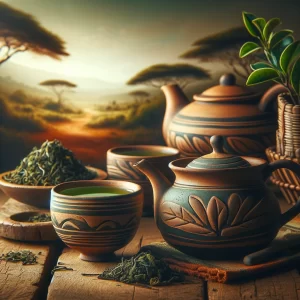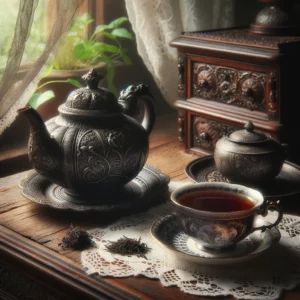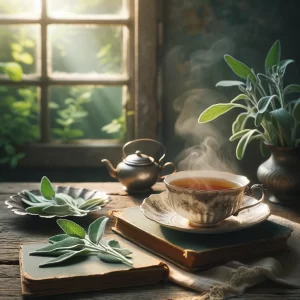Kenyan Green Tea is not just a beverage; it’s an experience that transports you to the lush landscapes and vibrant cultures of Kenya. This blog post aims to explore the wonders of Kenyan Green Tea, from its rich history and unique flavor profile to the perfect brewing methods and creative ways to enjoy it. Whether you’re a seasoned tea connoisseur or new to the world of teas, Kenyan Green Tea offers a delightful journey full of discovery and enjoyment.
Table of Contents
- Introduction
- The Origins and History of Kenyan Green Tea
- What Makes Kenyan Green Tea Special?
- Brewing the Perfect Cup of Kenyan Green Tea
- Ways to Enjoy Kenyan Green Tea
- The Best Pairings for Kenyan Green Tea
- Where to Find Kenyan Green Tea and How to Store It
- Cultivation and Processing of Kenyan Green Tea
- Conclusion
Introduction
Kenyan Green Tea is a treasure hidden within the vast tea fields of Kenya. Known for its bright color, rich aroma, and distinct flavor, this tea has made its mark on the world stage. Kenya, primarily recognized for its black tea production, has in recent years gained accolades for its green tea, which stands out for its quality and taste. This post delves deep into Kenyan Green Tea, exploring its origins, what sets it apart, and how best to enjoy its vibrant flavors.
The Origins and History of Kenyan Green Tea
Tea was introduced to Kenya by British settlers in the early 20th century, quickly becoming a major crop due to the country’s favorable climate and terrain. While black tea has been the mainstay of Kenya’s tea production, the introduction and rise of green tea production have added a rich diversity to Kenya’s tea offerings. Kenyan Green Tea has carved out its niche, becoming popular both locally and internationally for its distinctive taste and quality.
Key Points:
- Introduction by British settlers.
- Growth as a major crop.
- Diversification into green tea production.
What Makes Kenyan Green Tea Special?
Kenyan Green Tea’s uniqueness lies in its rich flavor profile, which ranges from bold and astringent to sweet and floral, depending on the processing method and the region where it’s grown. The volcanic soils, high altitudes, and equatorial climate of Kenya contribute to the tea’s distinctive qualities, making it a favorite among tea lovers.
Flavor Profile:
- Bold and astringent to sweet and floral.
- Influenced by volcanic soils, high altitudes, and equatorial climate.
Brewing the Perfect Cup of Kenyan Green Tea
To fully enjoy Kenyan Green Tea, brewing it correctly is key. Start with fresh, cold water and heat it to just before boiling (about 175°F or 80°C). Steep loose leaf tea or a tea bag for two to three minutes for the perfect balance of flavor.
Brewing Tips:
- Use fresh, cold water.
- Heat water to just before boiling.
- Steep for two to three minutes.
Ways to Enjoy Kenyan Green Tea
Kenyan Green Tea can be enjoyed in various ways, from a simple, soothing cup to being incorporated into recipes for an innovative twist. Try it iced for a refreshing summer drink, or blend it with spices like ginger or cinnamon for a warming winter beverage.
Creative Ideas:
- Iced Kenyan Green Tea.
- Kenyan Green Tea with ginger or cinnamon.
The Best Pairings for Kenyan Green Tea
Pairing Kenyan Green Tea with the right foods can enhance its flavor profile. Light pastries, fresh fruits, or sushi are excellent choices that complement the tea’s unique taste.
Food Pairings:
- Light pastries.
- Fresh fruits.
- Sushi.
Where to Find Kenyan Green Tea and How to Store It
High-quality Kenyan Green Tea can be found in specialty tea shops or online. Look for teas that are fresh and well-packaged. To maintain its freshness and flavor, store the tea in a cool, dry place, away from light and moisture.
Storage Tips:
- Store in a cool, dry place.
- Avoid light and moisture.
Cultivation and Processing of Kenyan Green Tea
Kenyan Green Tea is produced from the Camellia sinensis plant, with careful attention to cultivation and processing methods. The leaves are plucked, steamed, rolled, and then dried, a process that preserves the green color and enhances the tea’s natural flavors.
Cultivation and Processing:
- From the Camellia sinensis plant.
- Includes plucking, steaming, rolling, and drying.
Conclusion
Kenyan Green Tea offers a unique and enriching experience for tea enthusiasts around the world. Its distinct flavor, coupled with the rich history and tradition of Kenyan tea cultivation, makes it a must-try for anyone looking to expand their tea horizons. So why not brew a cup today and discover the vibrant taste of Kenya?
This guide aims to inspire you to explore the delightful world of Kenyan Green Tea, enjoying its flavors in various forms and making it a part of your tea-loving journey.




